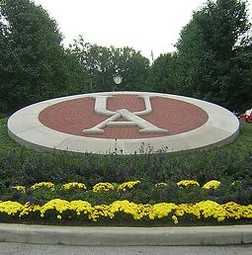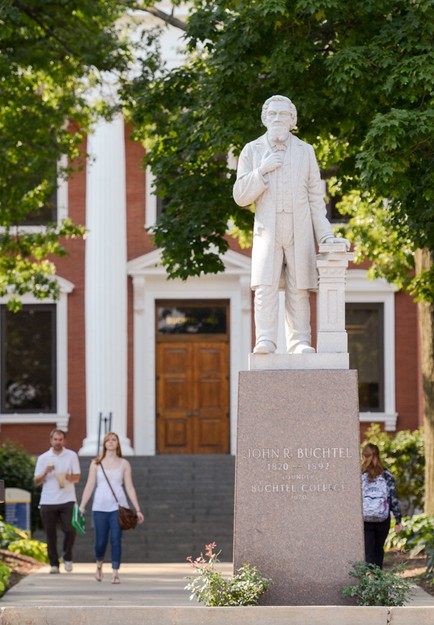John Buchtel Statue, University of Akron
Introduction
Text-to-speech Audio
Images
The University of Akron was founded in 1870 as Buchtel College. It became a municipal college in 1913 and was funded by city taxpayers until the 1960s.

This statue honors John Buchtel and is located in front of Buchtel Hall in the center of the campus.

Backstory and Context
Text-to-speech Audio
John and Elizabeth Buchtel donated $31,000 to build the college that would bear their name. This sum represented over half of the original cost to build the early college, while John Buchtel donated much of his time to overseeing many aspects of the college's operation. The cornerstone for the first campus building was laid in 1871. Horace Greeley, editor of the New York Tribune and one of the most influential men of the late 19th century, spoke at the ceremony celebrating the start of the college's construction.
Buchtel College was closely tied with the community and Universalist Church for its first few decades, but became a private, non-denominational school in 1907. In 1913, the trustees transferred the college and its assets to the city of Akron thanks in part to their own financial challenges, but also as part of the city's recognition that the college could help its commercial development. The University of Akron was assisted by city tax funds for the next 50 years, and enrollment grew from 198 to nearly ten thousand during these years.
The University's growth was related to the growth of the regional rubber industry. The university became the first in the world to offer a degree program in rubber chemistry-an essential commodity for both civilian industry and the military. Expansion followed World War II and Akron went from a municipal to state university in 1967. In 1988, the University debuted the world’s first College of Polymer Science and Polymer Engineering – now the largest academic program of its kind in the world.
By 2000, the University had added 22 new buildings, made many major additions or renovations and added 34 acres of green space. UA remains a public university focused on innovation, entrepreneurship, and investment in community and economic growth.
Sources
Knepper, George. Summit's Glory: Sketches of Buchtel College and the University of Akron. Akron, OH: University of Akron Press, 1991.
